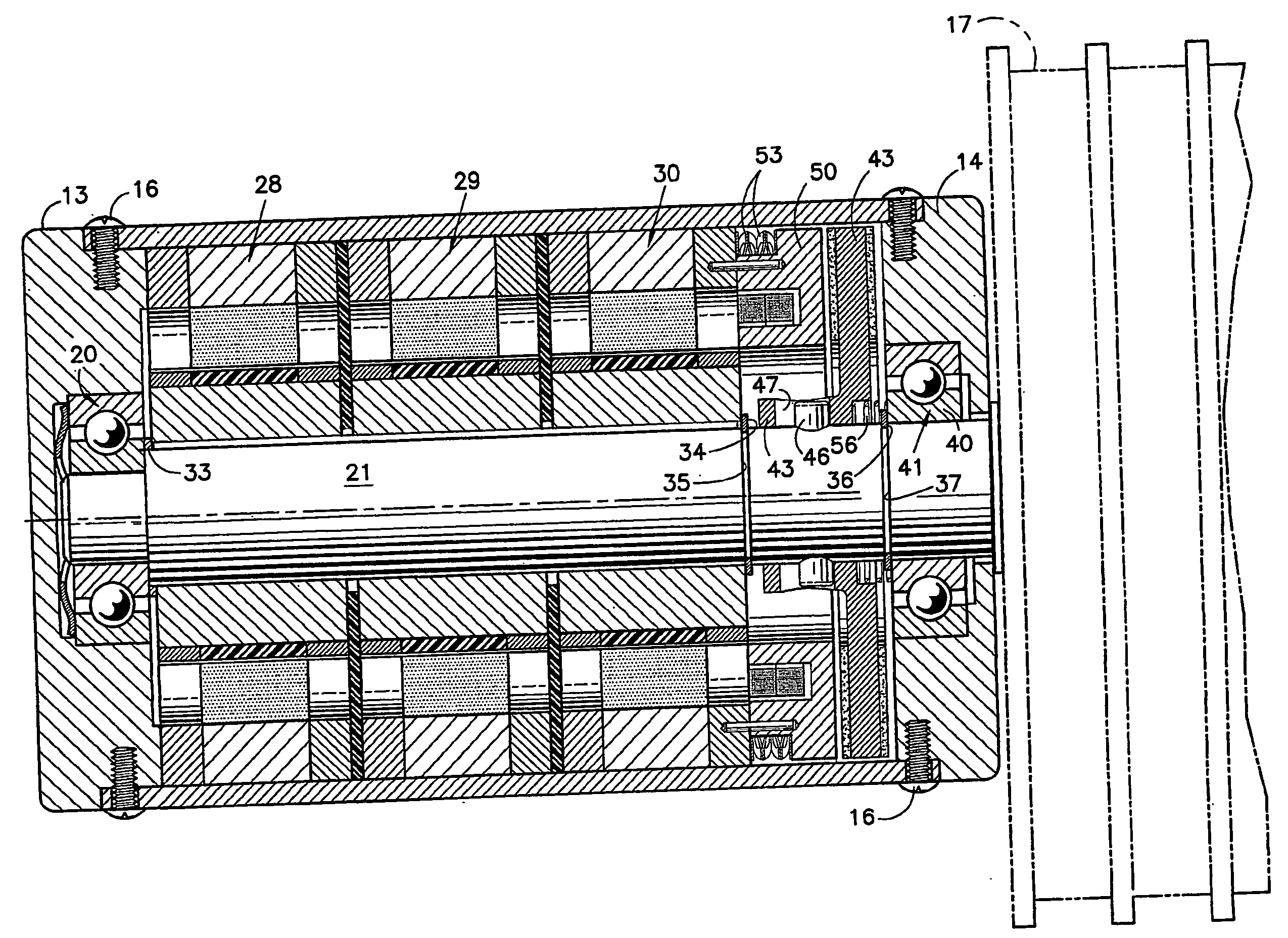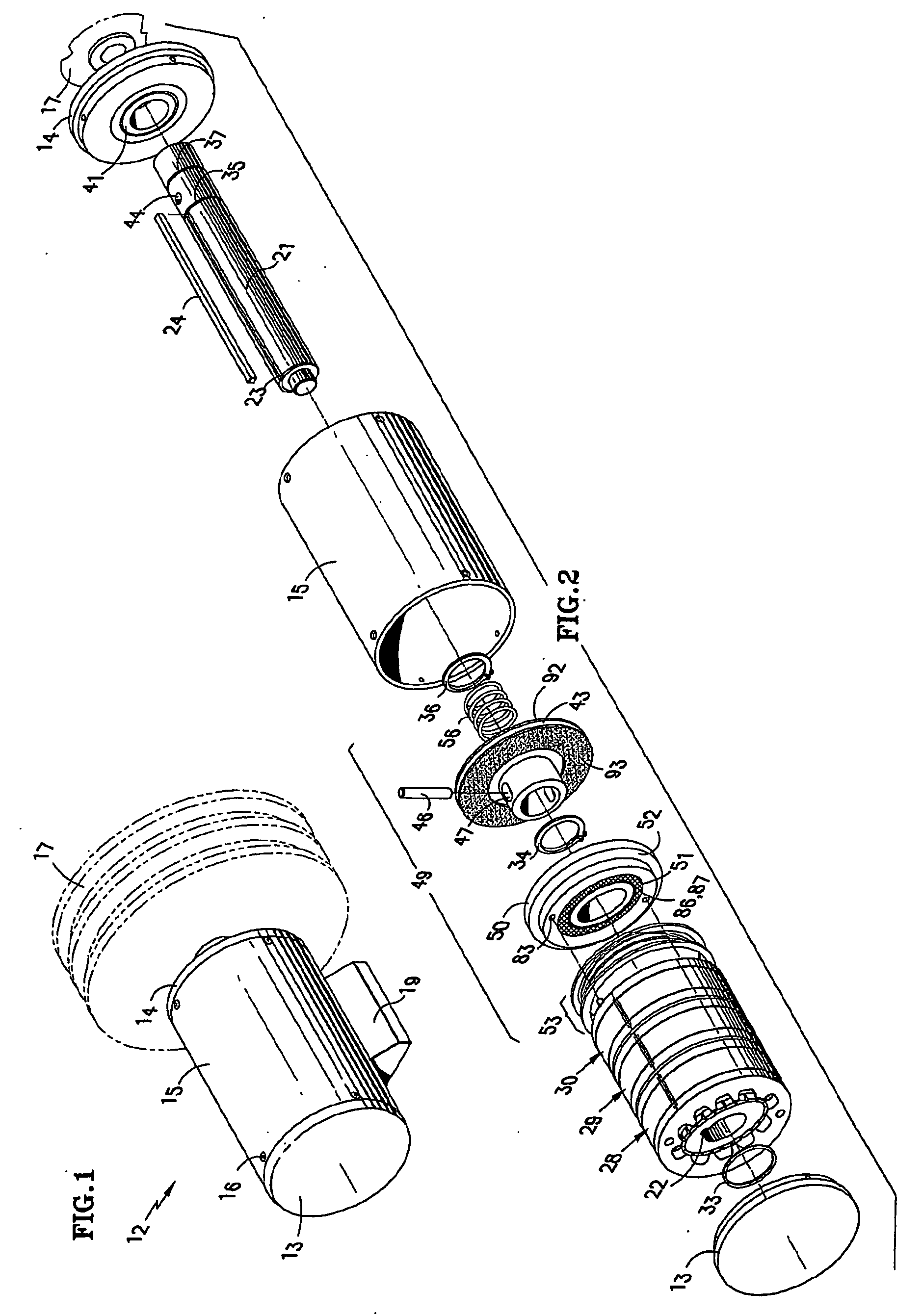Modular transverse flux motor with integrated brake
a transverse flux motor and module technology, applied in the direction of dynamo-electric brake control, mechanical energy handling, dynamo-electric brake/clutch, etc., can solve the problems of increasing material cost, reducing the service life of the motor, and requiring decades of maintenance-free service for the lifter machine, so as to achieve simple and fast torque, the effect of increasing the torqu
- Summary
- Abstract
- Description
- Claims
- Application Information
AI Technical Summary
Benefits of technology
Problems solved by technology
Method used
Image
Examples
Embodiment Construction
[0022] Referring to FIG. 1, a motor 12 with integral brake of the present invention includes a left end plate 13 and a right end plate 14 which are secured to an enclosure 15 by suitable fasteners, such as radial screws 16 in low torque applications. In large motors, the endplates may be secured with axial bolts threaded into a thicker enclosure. The motor rotates a driven member which, for instance, may be an elevator sheave 17. The motor enclosure has a mounting base 19. The enclosure 15 is omitted in FIG. 2 for clarity.
[0023] Referring to FIG. 2, the end plates 13, 14 have bearings therein, only the bearing 41 for the right end plate being shown in FIG. 2. Although not shown herein, the bearings may have covers to aid in lubrication and prevent ingress of dirt, as is known. A shaft 21 has a slot 23 to receive a key 24 which engages a plurality of rotor / stator modules 28-30, each of which has a corresponding slot 22 in its rotor so as to transfer torque from the rotor to the shaf...
PUM
 Login to View More
Login to View More Abstract
Description
Claims
Application Information
 Login to View More
Login to View More - R&D
- Intellectual Property
- Life Sciences
- Materials
- Tech Scout
- Unparalleled Data Quality
- Higher Quality Content
- 60% Fewer Hallucinations
Browse by: Latest US Patents, China's latest patents, Technical Efficacy Thesaurus, Application Domain, Technology Topic, Popular Technical Reports.
© 2025 PatSnap. All rights reserved.Legal|Privacy policy|Modern Slavery Act Transparency Statement|Sitemap|About US| Contact US: help@patsnap.com



